Oslo Neighbourhoods, Locations and Districts
(Oslo, Ostlandet, Norway)
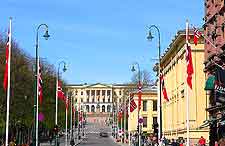
The lively Karl Johans Gate is Oslo's most famous traffic-free street and is situated between Nedre Slottsgate and Drammensveien. One of the most important districts within central Oslo, Karl Johans Gate has evolved to become an integral part of city life, being surrounded by many pedestrianised neighbourhoods and locations, such as the cobbled Stortorget market square.
Frogner is a traditional borough within westerly Oslo and has gained its name after the 18th-century estate of Frogner Manor, while other notable districts include Bygdoy, Gronland and St. Hanshaugen. Also worth visiting is the neighbourhood of Grünerlokka, which was once a bustling world-class district filled with industrial landmarks and poor housing. Today the town-like Grünerlokka area of Oslo is almost unrecognisable and this vibrant location has become extremely appealing to visitors.
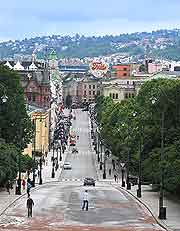
City Centre / Karl Johans Gate District
Many of the city's countless shops, restaurants and attractions radiate outwards from the Karl Johans Gate, including the Royal Palace and Oslo Cathedral, which was consecrated at the end of the 17th century and dominates the Stortorget. Next to the cathedral itself is the cobblestone Stortorvet, the city's old market square where a number of street vendors can still be found. The Sentralstasjon (Central Train Station) is also close by, along with the parliament buildings and the National Theatre.
Gronland District
Oslo's youthful district of Gronland is an especially inexpensive part of the city and features a number of cheap guesthouses. Known for its booming student population, Gronland is just a short walk from the railway station and contains a definite multicultural feel, with a diverse selection of ethnic eateries and shops. Gronland is home to some beautifully landscaped botanical gardens, along with a number of museums and the medieval neighbourhood of Oslo Ladegard, which stands at the base of the Ekeberg Hill and is home to the early 18th century Oslo Manor House.
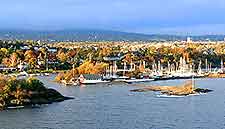
Bygdoy District
Situated on the westerly side of Oslo and enjoying a peninsula setting, Bygdoy is brimming with recreational activities for all ages and contains some of the city's most popular sandy beaches. Previously known as Ladegardsoen, Bygdoy contains the royal estates of both Oscarshall and Bygdo Kongsgard, the King's Forest and an eye-catching pier, close to the Town Hall itself.
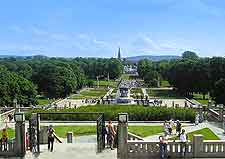
Frogner District
Incorporating the Bygdoy peninsula, there are many quality attractions spread all around the Frogner district and these include the Norwegian Folk Museum (Norsk Folkemuseet) and the Viking Ship Museum, which resides along the Huk Aveny and the restored 900-year-old Oseberg ship. The Frogner Park (Frognerparken) is also worth visiting and is home to Vigeland Park and its 200+ outdoor sculptures.
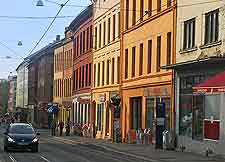
Grünerlokka District
Whilst it still embraces its past, Grünerlokka has become an extremely trendy neighbourhood and a particularly desirable place to live.
Many of the most important historical buildings have now been renovated, while other highlights include plenty of boutiques, coffee shops, parks and entertainment venues, including the Black Box Theatre in the old chocolate factory on the very outskirts of Oslo's Grünerlokka district.
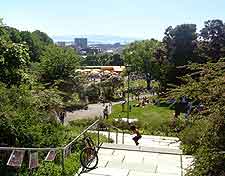
St. Hanshaugen District (St. John's Hill)
The neighbourhood of St. Hanshaugen is situated close to central Oslo and is bounded to the east by the River Akerselva. This district is overflowing with historical character, narrow alleyways and 19th-century wooden buildings. The ancient medieval Aker Church (Aker Kirke) is of special significance as the oldest building in the whole of Oslo, dating back to the very beginning of the 12th century. St. Hanshaugen has gained its name from its park where the summer solstice was celebrated for many years.
 The lively Karl Johans Gate is Oslo's most famous traffic-free street and is situated between Nedre Slottsgate and Drammensveien. One of the most important districts within central Oslo, Karl Johans Gate has evolved to become an integral part of city life, being surrounded by many pedestrianised neighbourhoods and locations, such as the cobbled Stortorget market square.
The lively Karl Johans Gate is Oslo's most famous traffic-free street and is situated between Nedre Slottsgate and Drammensveien. One of the most important districts within central Oslo, Karl Johans Gate has evolved to become an integral part of city life, being surrounded by many pedestrianised neighbourhoods and locations, such as the cobbled Stortorget market square.



